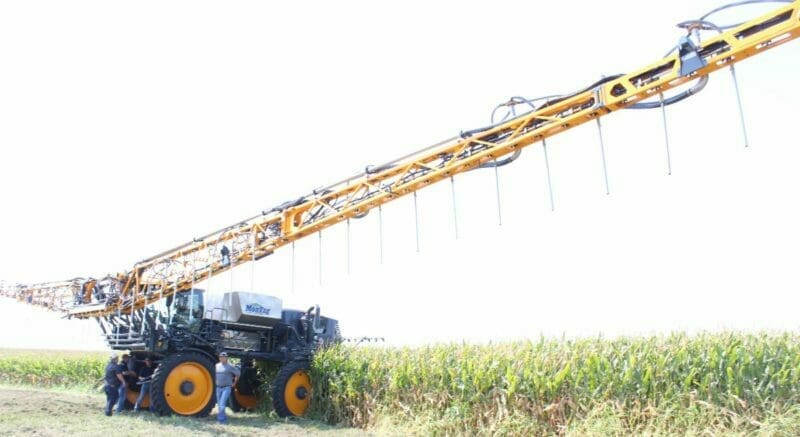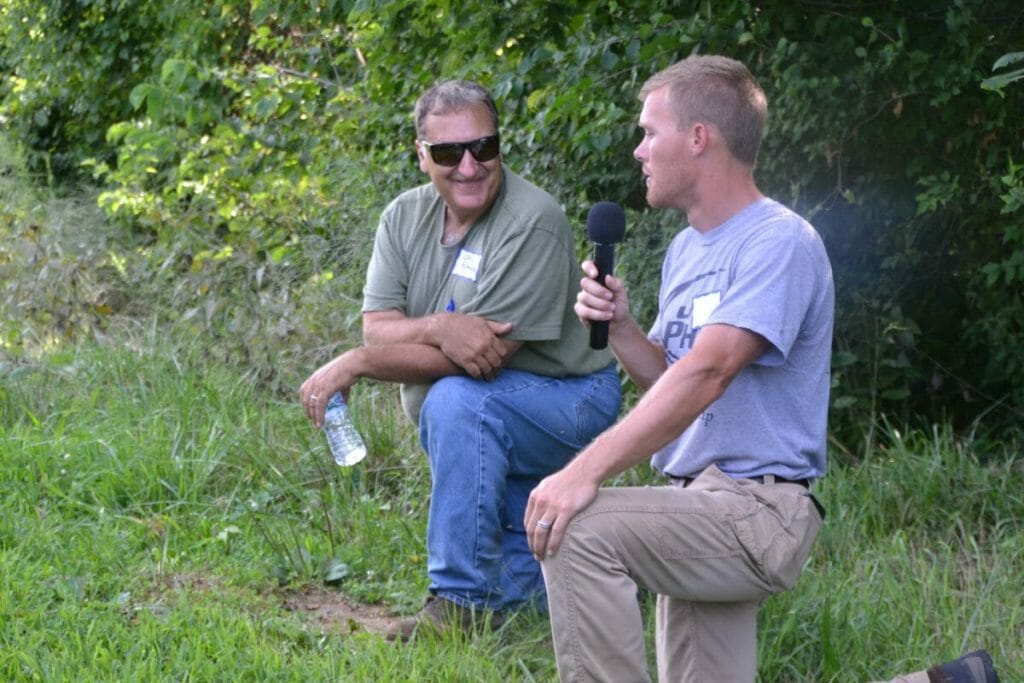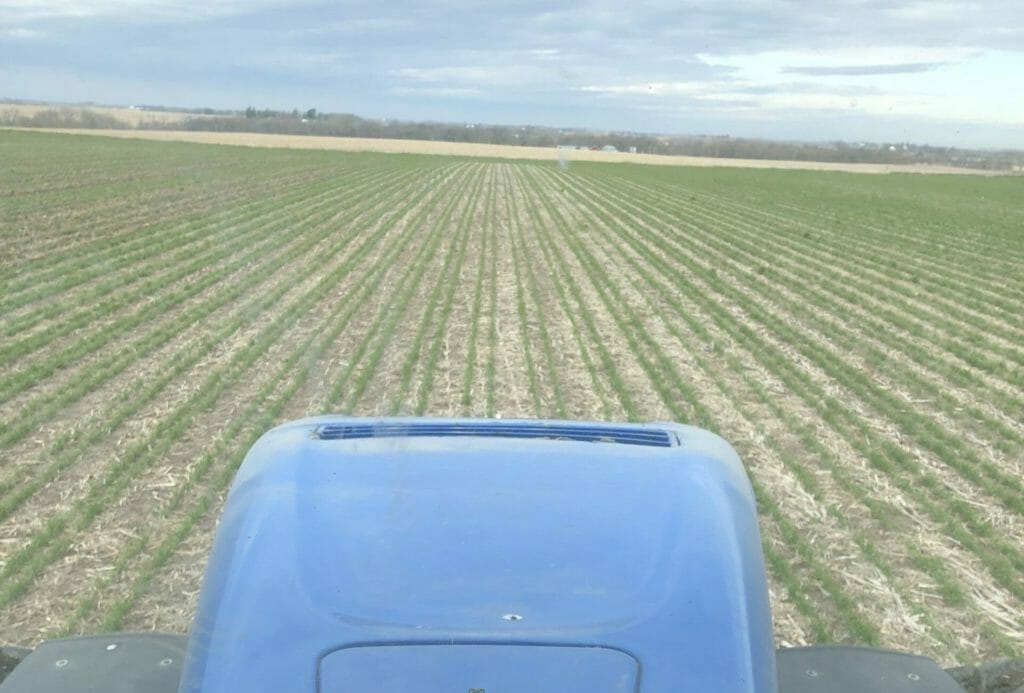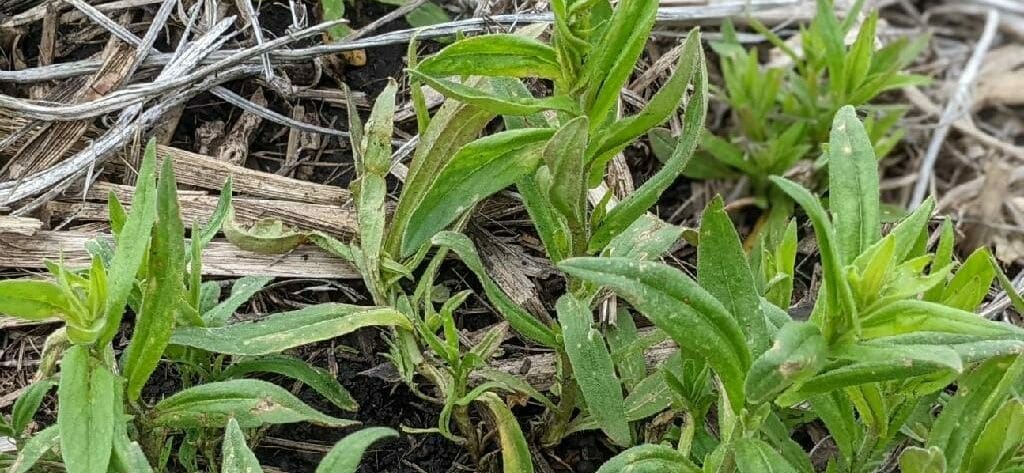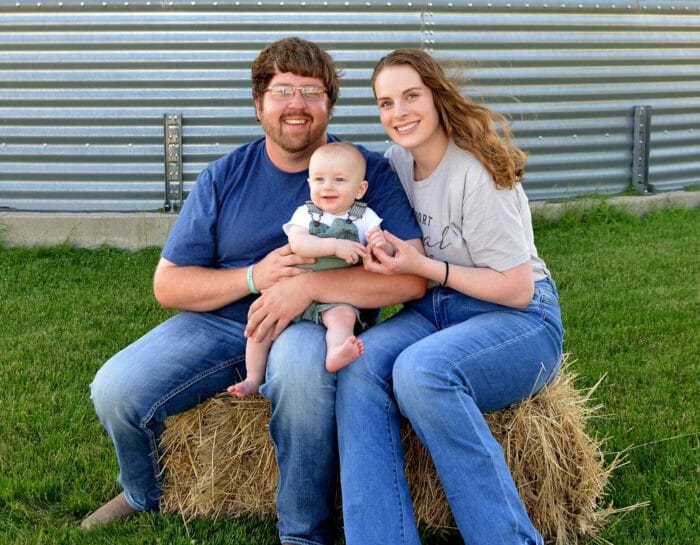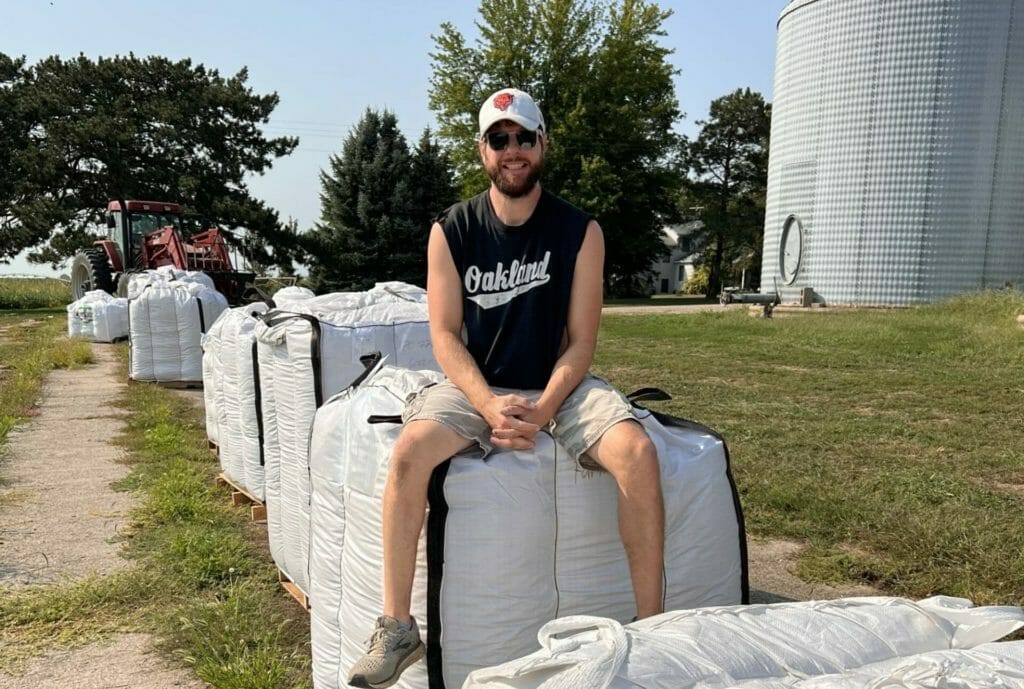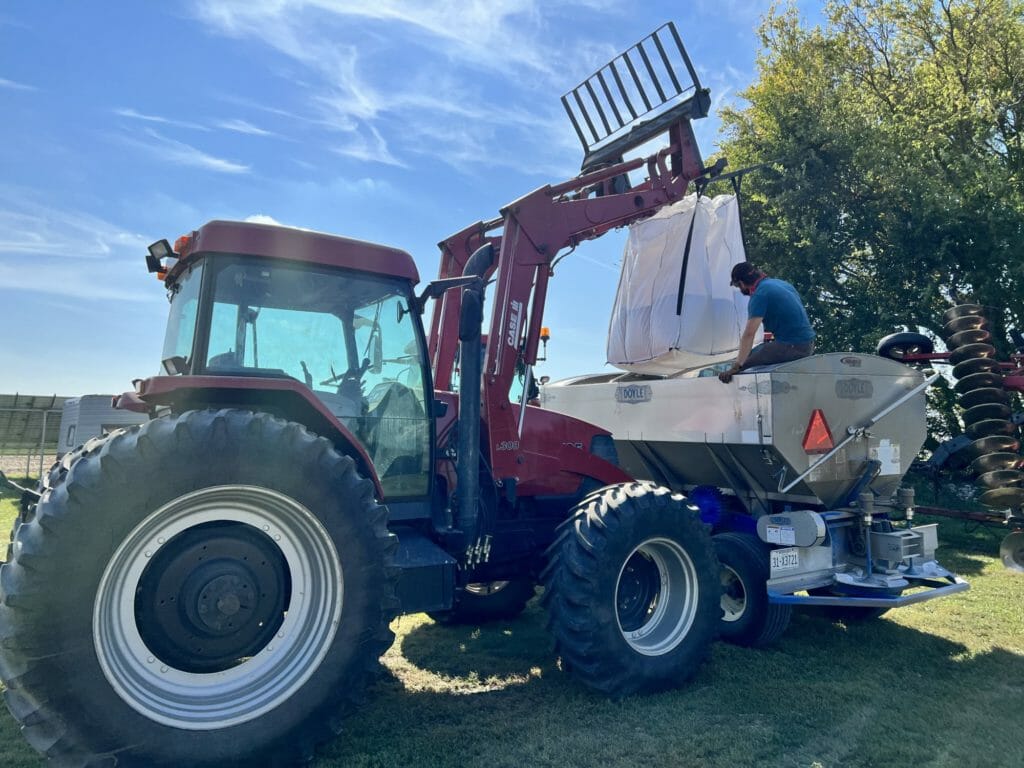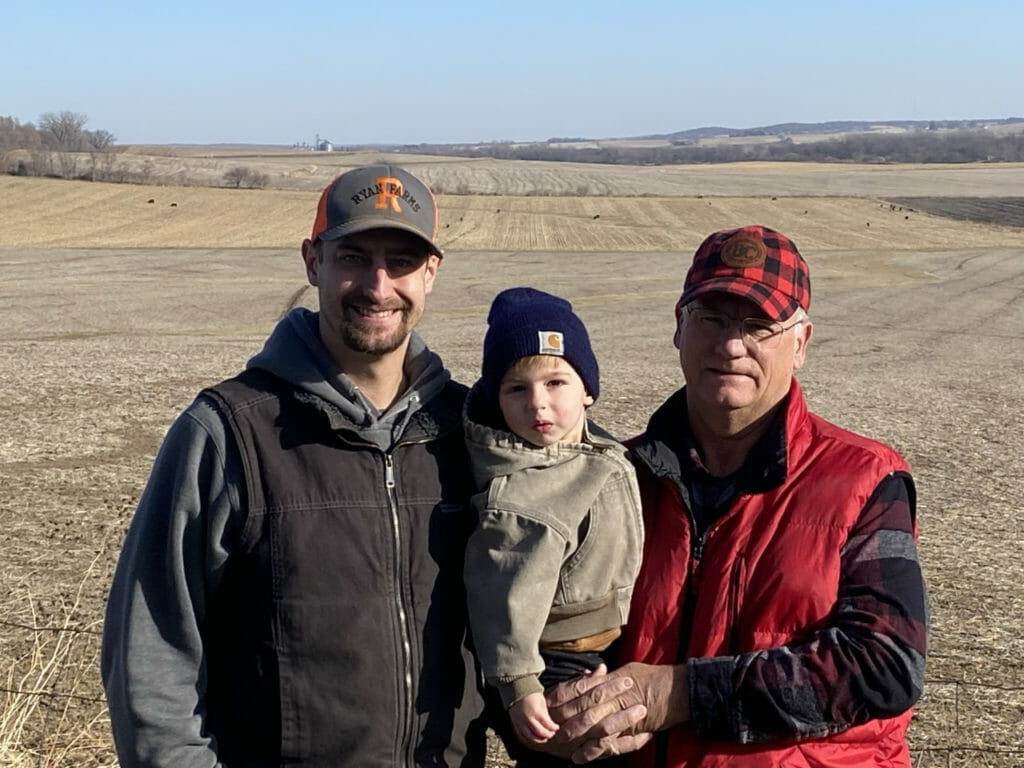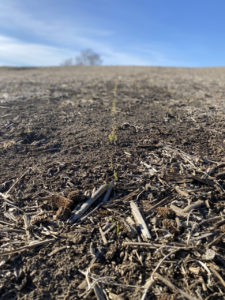Practical Cover Cropper: A Year in Review 2022
2022 was a big year for cover crops! Re-visit these featured farmers that we talked to in 2022 as we look forward to another year of putting cover croppers in the spotlight from across the Midwest!
January 2022: Kevin Cooper
Increasing the resilience of our collective cropland while reducing nutrient losses will require more acres in cover crops in 2022 and future years. For greater cover crop adoption, we need to spread the cover crop ‘gospel’ with our farming and non-farming friends.
Kevin Cooper is a farmer and cover crop/no-till evangelist near Nevada, IA. He notes, “cover crops are a great way to utilize sunlight to increase organic matter, which increases our soils’ water holding capacity.”
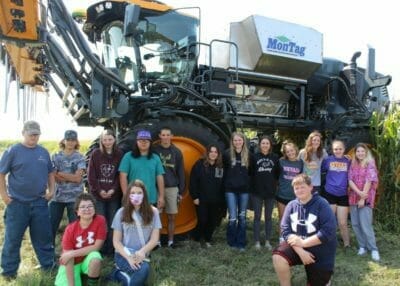 Inspiring youth: In addition to raising crops, Kevin is an agriculture instructor and FFA adviser at Nevada High School. Kevin prioritizes sharing his cover crop and no-till journey with his students. He says, “Our young people have got to value our soil, water, air. They’ll need to have resources a hundred, a thousand years from now.” While gaining on-farm experience, the classes and FFA chapter host field days and do outreach events.
Inspiring youth: In addition to raising crops, Kevin is an agriculture instructor and FFA adviser at Nevada High School. Kevin prioritizes sharing his cover crop and no-till journey with his students. He says, “Our young people have got to value our soil, water, air. They’ll need to have resources a hundred, a thousand years from now.” While gaining on-farm experience, the classes and FFA chapter host field days and do outreach events.
Promoting outreach: Kevin notes that cover croppers throughout the Midwest can do outreach themselves. He says, “Look for opportunities to promote cover crops with your local civic groups, schools and even neighbors.”
March 2022: Greg Rebman
 Greg Rebman of Frederick, Illinois has 100 percent of his crop ground covered with his go-to cover crop: cereal rye. This spring he will plant both corn and soybeans into the rye residue. Reflecting on what he’s learned since his start with cover crops in 2014, he says, “People will spend money on tillage equipment that does the same thing that cover crops do.”
Greg Rebman of Frederick, Illinois has 100 percent of his crop ground covered with his go-to cover crop: cereal rye. This spring he will plant both corn and soybeans into the rye residue. Reflecting on what he’s learned since his start with cover crops in 2014, he says, “People will spend money on tillage equipment that does the same thing that cover crops do.”
Terminating Rye: When planting corn into rye Greg says, “I will terminate prior to planting or right after; I don’t like the rye to get taller than knee-high ahead of corn.” For soybeans he will allow the rye to get chest high when the rye is starting to head out but before the pollination stage. He notes, “Rye uses a lot of water, which has more of a detriment to corn than soybeans but can affect yields for both.” He encourages, “whatever you are planting, be nimble, if it’s turning out dry, get the rye down.” Greg primarily terminates using glyphosate as his first choice or glufosinate (Liberty) as a close second choice.
Avoiding N Tie-Up: At planting Greg applies 30 pounds of liquid nitrogen to avoid N tie-up with rye ahead of corn. He recommends using between 30 to 60 pounds of N at planting, stating “beyond that could cause burn, reducing herbicide efficacy.”
Planter Adjustments: Having more down pressure is a must for Greg. “I’ve been no-tilling long enough now that the ground is pretty firm but has increasing water infiltration.” For increased down pressure, he uses a 2007 Kinze 3600 split-row planter with down pressure springs. He notes, “I use Copperhead closing wheels for corn but not beans.” Greg uses a no-till cutter at planting but does not use row cleaners.
April 2022: Kyle Schminke
Kyle Schminke of Shellsburg, Iowa plants corn and soybeans into a green wheat cover with a modified 40-foot drill. This allows him to plant into a 20-inch space with cover crops growing on either side. “I think when it is still green out there, the ground is a better seed bed than when planting after termination,” says Kyle.
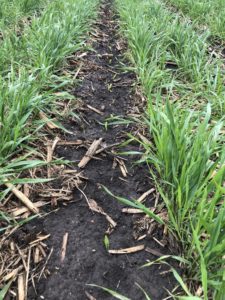 Planting and Termination: Kyle allows the wheat to get to about 12-15 inches tall ahead of corn and about knee high ahead of soybeans. After planting corn or soybeans green, Kyle aims to terminate his cover crop with Round-Up a week to 10 days after planting.
Planting and Termination: Kyle allows the wheat to get to about 12-15 inches tall ahead of corn and about knee high ahead of soybeans. After planting corn or soybeans green, Kyle aims to terminate his cover crop with Round-Up a week to 10 days after planting.
Moisture and N tie-up: Cover crops like wheat or rye absorb a lot of moisture when growing in the spring. It is important that moisture is not being diverted away from cash crops at planting. “We look at the available moisture in the soil and the forecast, then make our plan to avoid losing moisture,” says Kyle. If conditions appear too dry ahead of planting Kyle will plan to terminate his wheat earlier. Another hurdle when planting green is avoiding nitrogen tie-up. Kyle applies 32% N to the seed row after planting, but before emergence, to mitigate N tie-up.
Skip-rows: Leaving a skip-row or gap-row in the cover crop is a management strategy when planting green to avoid too much competition between the green cover and emerging seedlings. “I believe you have to have some space within the cover crop for the seed row. Otherwise, you’re going to have to terminate the cover a lot sooner to prevent competition,” cautions Kyle.
May 2022: Kevin Veenstra
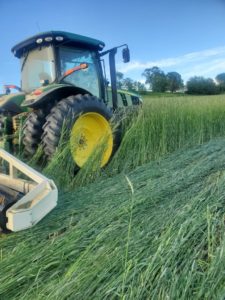 Last year Kevin Veenstra of Grinnell, Iowa invested in a roller-crimper to terminate his cereal rye cover crop after planting soybeans on 300 acres. His first year of roller-crimping brought about success in reducing herbicide passes and lessons learned for future years.
Last year Kevin Veenstra of Grinnell, Iowa invested in a roller-crimper to terminate his cereal rye cover crop after planting soybeans on 300 acres. His first year of roller-crimping brought about success in reducing herbicide passes and lessons learned for future years.
Roller-crimp strategy: Kevin has terminated his cereal rye using chemical termination in the past. Now experimenting with roller crimping, Kevin seeds 90 lb cereal rye per acre in the fall. In Spring 2021, he crimped the rye just as it started to head out, 20 days after planting his soybeans.
 Unfortunately, this roller-crimping attempt did not fully kill the rye and he still needed to spray. He notes, “I had to prioritize my soybean timing; if I plant a little later this year it might be better timing to crimp the rye. I’m still experimenting, and it would have been better if I’d been able to wait until later to plant.”
Unfortunately, this roller-crimping attempt did not fully kill the rye and he still needed to spray. He notes, “I had to prioritize my soybean timing; if I plant a little later this year it might be better timing to crimp the rye. I’m still experimenting, and it would have been better if I’d been able to wait until later to plant.”
Changing tactics: Kevin’s goal with roller-crimping is to use less herbicide. Last year he eliminated one burndown herbicide pass, and looking forward, he would like the roller-crimper to serve as a substitute for burndown, entirely. “I only sprayed twice last year instead of three passes. In an ideal world I’d only spray once, about a month following crimping,” says Kevin.
June 2022: Mark Oehlerking
Winter camelina is a winter-hardy brassica that is gaining traction in the Midwest as a cover crop ahead of corn or as an oilseed relay crop. Central Iowa farmer Mark Oehlerking recently used glyphosate to terminate his first ever winter camelina cover crop the second week of May, shortly after planting corn into it.
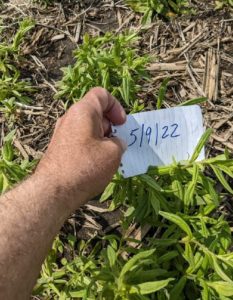 Why camelina? For Mark, camelina as a cover crop draws his interest as potential erosion control and because it has a lower risk of N tie-up compared to cereal rye. Happy with his first trial, he found that the camelina is easy to plant into and easy to terminate. It is important to note, however, that camelina produces less biomass than rye and breaks down more quickly; it doesn’t offer much for weed suppression or grazing in fall or spring.
Why camelina? For Mark, camelina as a cover crop draws his interest as potential erosion control and because it has a lower risk of N tie-up compared to cereal rye. Happy with his first trial, he found that the camelina is easy to plant into and easy to terminate. It is important to note, however, that camelina produces less biomass than rye and breaks down more quickly; it doesn’t offer much for weed suppression or grazing in fall or spring.
Fall seeding: In early October, Mark seeded the camelina with a John Deere 750 no-till drill with the grass attachment on low settings. He noted “camelina has very small seeds; make sure your drill is set up to accommodate such small seeds.” Mark tested several seeding rates, with guidance from Heartland Co-op, ranging from 2 to 12 lb/ac.
Cost of camelina: Depending on where the camelina is sourced, the price is relatively low, between $3 to $4.50 per pound of seed. State cost-share programs in Iowa require that at a minimum, camelina be broadcast at 4 lb/ac or drilled at 3 lb/ac. If seeded at cost-share minimums, camelina can be cost effective, although at higher seeding rates it doesn’t remain price competitive compared to rye.
August 2022: James Hepp
James Hepp of Rockwell City, Iowa, likes to see good fall growth on his cover crops for weed suppression. The last few years, James successfully overseeded rye, sometimes mixed with oats, on 80 to 150 acres of standing corn using a Hagie highboy. While this year he’s changing his strategy, he maintains the August overseeding approach could be right for some farmers.
Watch for rain: Check the forecast for mid to late August: “Sometimes we just try to get it done, but if you can get a good half-inch of rain afterward that is great,” says James. He seeded at 50 to 60 lb/acre, and although that rate was sufficient, he recommends bumping up to 65 to 70 lb/acre to meet weed suppression goals. With his highboy, James could complete all of his overseeding, up to 150 acres, in one day.
A method for weed suppressions: For farmers without a drill, overseeding into a standing crop or just after harvest is a method worth trying, at least on part of their acreage. “Just go out and watch it, take notes, test for weed suppression of water, hemp or thistles,” advises James.
Post-harvest broadcasting an alternative: During recent drought years, James saw some ear breakage due to overseeding with the highboy, so last year he switched tactics, opting to broadcast into the cornstalks right after harvest. This method still allows for good growth and provides some weed suppression. This year, he is planning to broadcast 200-250 acres. In the future James would like to upgrade to an air-seeder for better accuracy and speed, but for now, he is content to experiment with the equipment he has and to get more acres in cover crops.
October 2022: Lisa Kubik
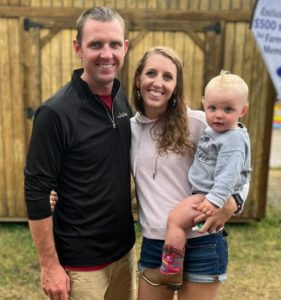 Lisa Kubik farms with her family in Traer, Iowa, where they grow corn, soybeans, and cereal rye for ryelage, as well as raise Kiko goats and 100 head commercial cow-calf herd. In the fall, the Kubiks’ cattle graze 60 acres of their cereal rye cover crop.
Lisa Kubik farms with her family in Traer, Iowa, where they grow corn, soybeans, and cereal rye for ryelage, as well as raise Kiko goats and 100 head commercial cow-calf herd. In the fall, the Kubiks’ cattle graze 60 acres of their cereal rye cover crop.
Drilling vs. aerial application: When seeding covers to graze in the fall, their methods include aerial seeding and drilling after corn silage or soybeans. “We prefer drilling, but we can get in a lot earlier with aerial,” says Lisa. “Drilling is a more reliable method to achieve a good stand, and it works better the earlier you can get it planted, but aerial seeding guarantees early planting.”
When they graze: Their cows come off of pastures in late October or early November and are turned out on the cover crops to graze for 2-3 weeks. During this period the only supplemental feed they receive is a protein tub.
Value of grazing covers: Lisa hasn’t crunched the numbers on the feed value of their cover crops, but she definitely sees value in the 2-3 weeks of additional grazing for 100 head. The cattle reap the benefit of grazing a protein-rich green cover alongside the corn stalks and bean stubble. Lisa adds that some value is hard to put a number on, “some of the benefits we see are improved soil health, reduced erosion and reduced compaction from the cattle, which isn’t necessarily quantifiable.”
November 2022: Graham Christensen
Graham Christensen farms with his family near Omaha, Nebraska, where they grow 800 acres of non-GMO corn and soybeans and are experimenting with contract grazing their cover crops. They have grown non-GMO corn for almost 15 years and non-GMO soybeans for the last two years.
The business case for non-GMO: Raising non-GMO crops has been financially advantageous for the Christensens. “We pay less in seed and are seeing a premium on our product in the marketplace,” says Graham
Learning curve: While non-GMO corn has been relatively similar to GM- corn varieties in terms of yield, productivity and weed control, they are re-learning what works best for soybeans. Soybean yields have remained steady, but weed pressure is heavier, specifically from ragweed and pigweed.
Covers critical for weed control: Planting early is key to growing enough biomass for weed control and grazing. Most of their grazing acres were aerially-seeded on Sept. 9 with 38 lb/ac of rye and 1 lb/ac of turnips and clover. “We will compare seeding options for cover crops and in the future will explore if crimping is a viable option to increase weed control” says Graham
December 2022: Don Ryan
Don Ryan farms with his family near Marengo, Iowa, where they raise a cow-calf herd and grow alfalfa, corn, soybeans and pasture. Don plants and grazes rye on a majority of his acres and the last three years has planted 50-60 acres of a winter wheat cover crop ahead of corn.
Why Winter Wheat? The goal for Don is to protect the soil from wind and water erosion but have less biomass to terminate in the spring than with the rye. He likes winter wheat because it has less growth compared to rye and is not as vigorous. Don feels he has a wider window of opportunity for burndown in the spring with winter wheat and less yield drag compared to rye.
This Fall: “This year we planted around the 20th of October and we are starting to see growth after some of the warmer weather. We planted at the second most shallow setting, at half an inch depth or less due to soil dryness.”
What to expect: Don hasn’t had any issues with the winter wheat overwintering but warns that it isn’t great for pasture. “Don’t expect a lot of growth. You might get a little in the winter and a little in the spring, but not like the rye.”
Thank you to all the farmers that shared their stories in 2022!
If you want to share your story in 2023, please contact taylor.hintch@practicalfarmers.org.
Register here to receive the practical cover cropper newsletter

